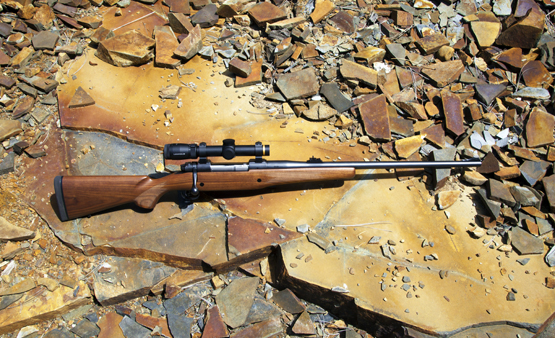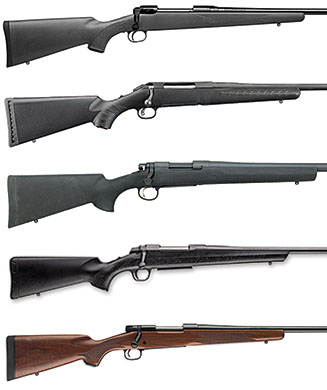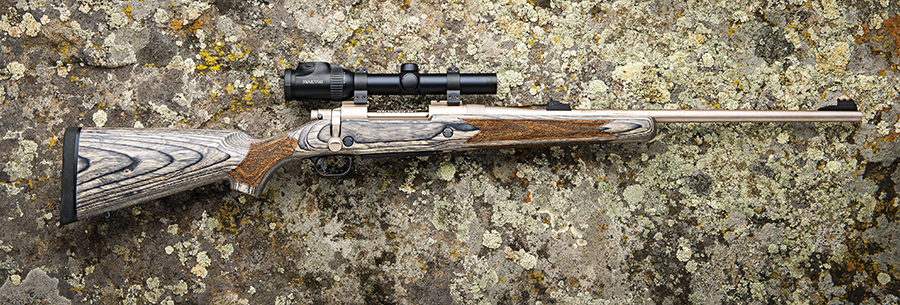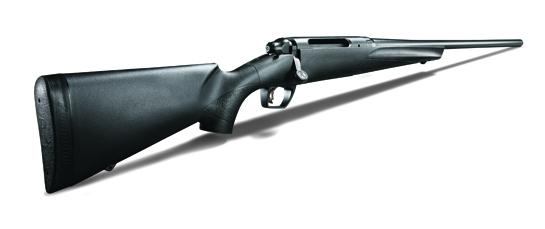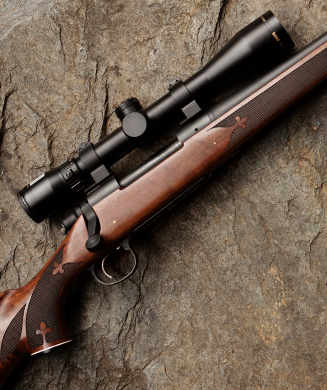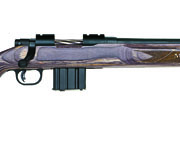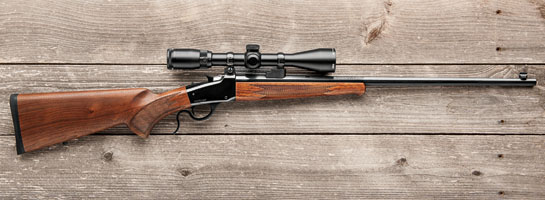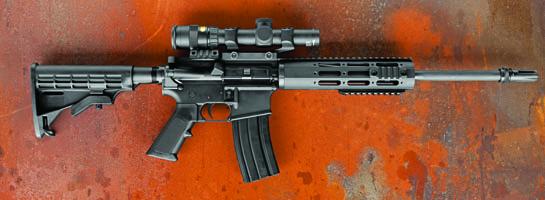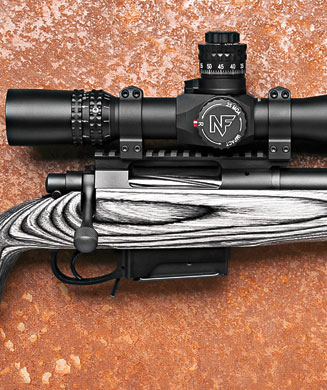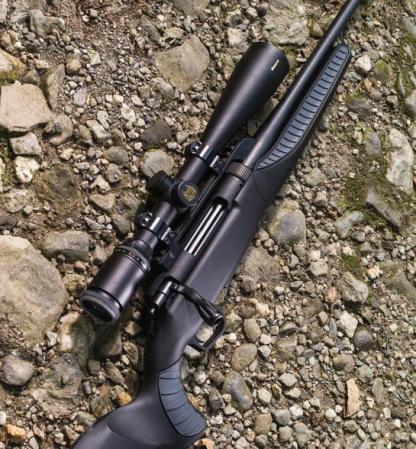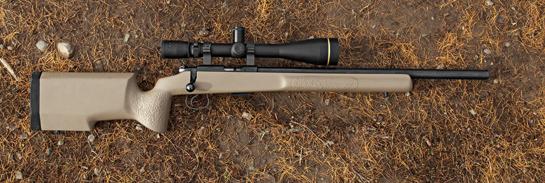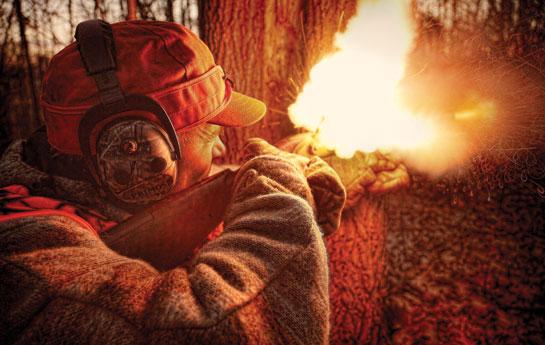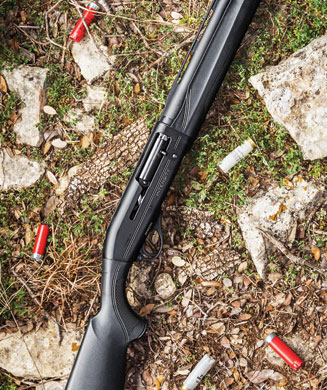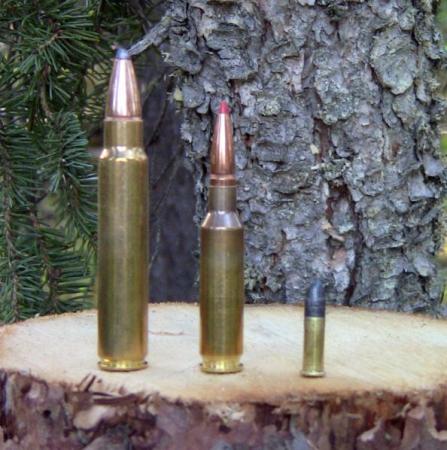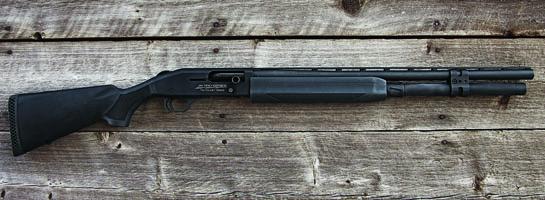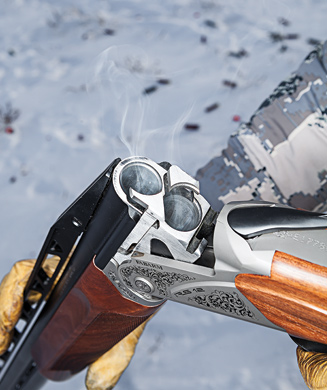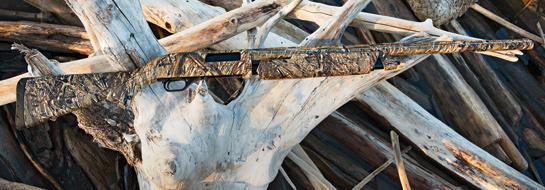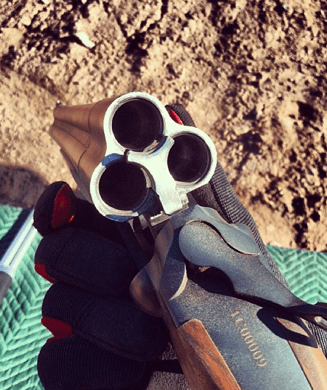We may earn revenue from the products available on this page and participate in affiliate programs. Learn More ›
Photo: Andrew Geiger
The Ruger Guide Gun is a serious piece of business. The heart of the rifle is Ruger’s M77 action, which embodied Bill Ruger Sr.’s ideas of what a bolt-action ought to be–meaning a design that properly honored the genius of Paul Mauser and his creations from the late 19th century.
For solid and reliable operation, it is difficult to beat what the M77 offers. The full-length claw extractor, dual locking-lug configuration, stout ejector, and three-position safety make for a no-nonsense big-game rifle. This is doubly so when the rifle is chambered in .375 Ruger, as was the case with my Guide Gun.
Magnum Performance
The .375 Ruger is one of the compact magnums developed by Hornady. These cartridges were made to achieve magnum performance out of brass that fits into a standard long-action receiver. This means the .375 Ruger can do what a .375 H&H does–from an even shorter (20-inch vs. 24-inch) barrel. Given the .375 H&H’s justified reputation as one of the greatest big-game cartridges ever developed, this puts the .375 Ruger in rarefied company.
The 20-inch barrel makes the Guide Gun compact and nimble. These are wonderful qualities in any hunting rifle, especially when shots might need to be taken under stressful and unanticipated circumstances, as can happen while stomping through grizzly country. But they come at a price.
**
Taming the Beast**
My rifle weighed 8 pounds 2 ounces unscoped, which isn’t much when you’re trying to handle the recoil generated by the .375 Ruger’s 4,835 foot-pounds of muzzle energy with 270-grain loads. To mitigate that, the Guide Gun comes with a removable muzzle brake that takes some of the sting out of the kick, though you’d better be wearing excellent ear protection when you pull the trigger.
The brake isn’t the only trick the Guide Gun uses to soften the blow. The lines of the stock mimic that of Ruger’s Scout Rifle, and this design does an excellent job of putting the ample recoil pad into the pocket of the shooter’s shoulder–particularly in kneeling, sitting, and off-hand positions. The stock’s pad and geometry also help keep the rifle firmly in place to lessen the punishment of a hard-kicking rifle on the cheek of the shooter.
Good Grip
Rugers are traditionally graced with excellent and functional checkering, and that’s the case with the Guide Gun. The deeply cut diamonds on the forend wrap all the way around the stock, which is a nice change from the common (and inferior) practice of checkering separate panels on the sides and bottom to save money. A barrel band to mount a sling keeps the forend clear of hardware that might bang your hand during recoil.
Go Short
The rifle comes with stock spacers to increase the length of pull, but the 12.75-inch LOP it ships with is advantageous for a couple of reasons. One, it helps the rifle snap quickly into place with minimal chance that it will hang up on clothing or other gear. Also, the LOP is ideal for shooting from a squared-up fighting stance, rather than the traditional “bladed” position hunters often employ while shooting off-hand. This squared stance provides a better view of the target and gives the shooter greater balance and mobility.
The rifle comes with scope bases milled into the receiver, so there’s one less thing to attach, and have potentially go wrong, when mounting an optic.
The trigger break on my sample tipped the scale at 4 pounds 5 ounces. This is fine for dangerous-game hunting but a touch heavy for more precise shot placement. During my shooting sessions, the gun ran well and had no misfeeds, misfires, or issues with extraction and ejection. The smooth bolt handle could use some checkering to provide a better grip. I would certainly have that done if the rifle were mine.
I shot three different loads through the rifle, Hornady’s two 300-grain options and the 250-grain GMX load. Five-shot accuracy was right around 2.5 inches at 100 yards, with the best being a 1.75 inch group with the 300-grain DGS round.
Whether you’re looking for the perfect bear gun for a once-in-a-lifetime trip to Alaska or are shopping around for a big-bore rifle to carry year-round, the Guide Gun is up to the task.
Stats
Caliber: .375 RCM
Capacity: 3 + 1
Weight: 8 lb. 2 oz.
Stock: Laminate
Trigger Pull: 4 lb. 5 oz.
Report Card
Overall: * * * *
Performance: A
Design: A-
Price/Value B+
**
Accuracy:** Average 5-shot group at 100 yards: 2.57 in.; smallest group: 1.75 in. (Hrn. 300-gr. DGS)
Verdict: Everything about this rifle is solid and tough. It is built like a tank, hits hard, and will put any animal facedown in the dirt.


